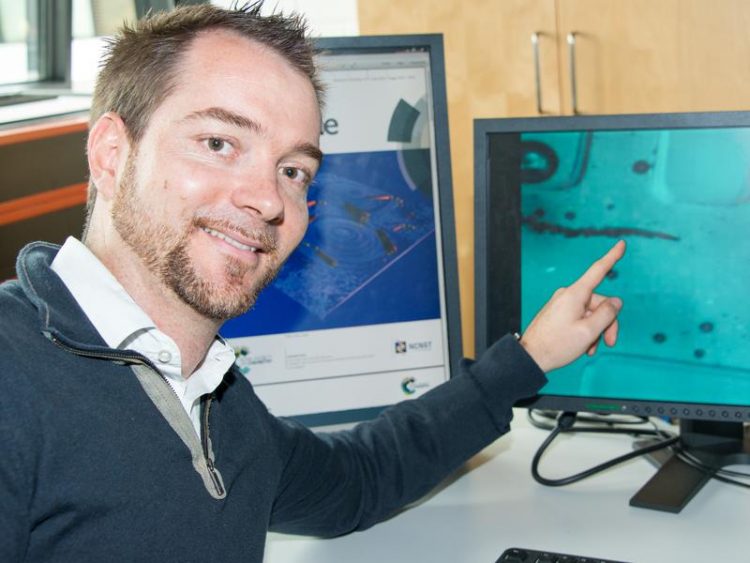Research group leader Samuel Sánchez is one of Spain’s top ten innovators

Dr. Samuel Sánchez at the Max Planck Institute for Intelligent Systems, Stuttgart Photo: Carmen-M. Müller
Samuel Sánchez however is already hard at work in his lab at the Max Planck Institute in Stuttgart to make these visions come true. For his innovative research, the 34 years old chemist has now been named as one of Spain’s top ten innovators under 35 by the Spanish edition of the journal MIT Technology Review.
The jury honored him for his significant contribution in the field of macro- and nanomotors as well as his interdisciplinary research approach. Sánchez combines materials sciences, chemistry and biology in his work to design and develop small-scale motors and their practical use.
Samuel Sánchez obtained his PhD in analytical chemistry at the Universitat Autònoma de Barcelona in 2008. He went on to work in Japan and the Leibniz Institute in Dresden. Since 2013, he heads a Max Planck Research group at the Max Planck Institute for Intelligent Systems in Stuttgart.
The Spanish edition of the journal MIT Technology Review has been giving out this innovation award for four years now. Together with Sánchez, nine other young Spanish scientists under the age of 35 have received this prize this year for their innovative achievements in various fields of technology. The award ceremony will take place in Valencia in November.
Weitere Informationen:
Media Contact
All latest news from the category: Science Education
Newest articles

A universal framework for spatial biology
SpatialData is a freely accessible tool to unify and integrate data from different omics technologies accounting for spatial information, which can provide holistic insights into health and disease. Biological processes…

How complex biological processes arise
A $20 million grant from the U.S. National Science Foundation (NSF) will support the establishment and operation of the National Synthesis Center for Emergence in the Molecular and Cellular Sciences (NCEMS) at…

Airborne single-photon lidar system achieves high-resolution 3D imaging
Compact, low-power system opens doors for photon-efficient drone and satellite-based environmental monitoring and mapping. Researchers have developed a compact and lightweight single-photon airborne lidar system that can acquire high-resolution 3D…





















